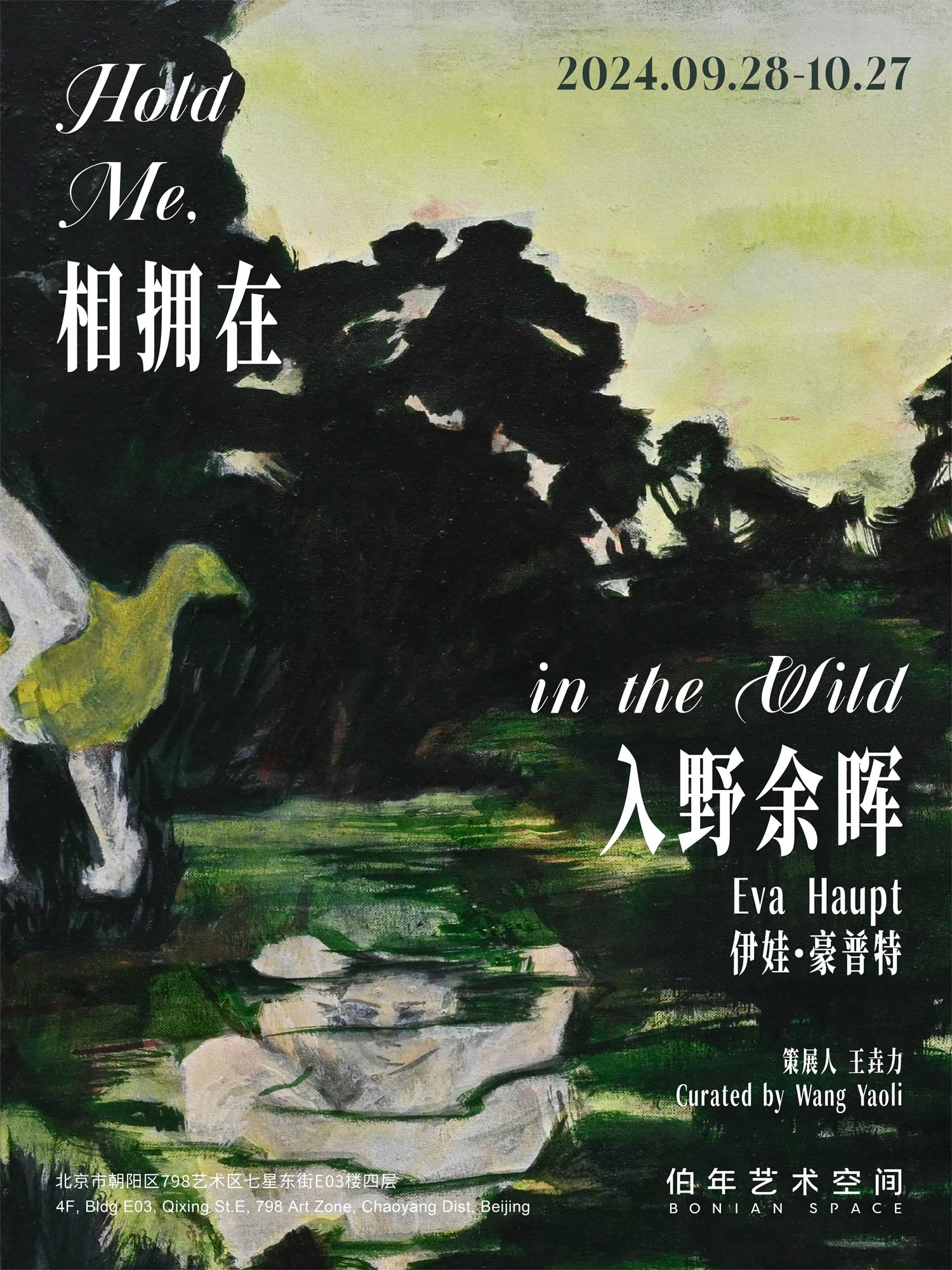“Even though sometimes I do not know the meaning of a painting, it can become‘alive’in the process. This means it intensifies and starts to make sense somehow. At best, a moment or an insight gets caught, or something is processed or raised, something clarified or depraved. I do not necessarily understand it at the moment; sometimes, I need a past in between. Also, the painting may not redeem and fail.”——Eva Haupt
BONIAN SPACE is pleased to announce the first solo exhibition in China,Hold Me, in the Wild, by German artist Eva Haupt, from September 28 to October 27, 2024. Curated by Wang Yaoli, the exhibition features over a dozen of her latest oil on canvas, tempera, and mixed media on paper, showcasing how she amplifies her subtle emotional perceptions of the external world by switching perspectives.
Haupt has always viewed her working method as a "game," experimenting with different binders and pigments to mix colors. The characteristics of the materials—such as viscosity, glossiness, and glazing ability—significantly influence the visual outcome, allowing her to determine how colors and brushstrokes are presented on the canvas. She relies on intuition rather than pre-sketching, applying countless layers and modifications until the work becomes coherent and complete. She believes that painting should not be confined to form or merely create abstract images; it requires innovation and invention, with traditions needing to be discussed and broken.
Haupt's work is not limited to oil painting, she is also keen on drawing and murals. Her brushstrokes exude a primitive, natural, and naive essence reminiscent of cave paintings. Through her paintings, she explores the connections between us and ourselves, others, other creatures, and even the biological nature we possess as human beings (a kind of advanced animal). In her delicate yet potentially violent imagery, she narrates stories of healing and suffering, focusing on fragments and details that occur in life. In her works on paper series, she recorded moths that used to steal food and live in oats in her studio (she had to set traps to kill them). She also drew a snail that she accidentally trampled to death on her way home in the rain one day, and she felt guilty and sad.
In her view, the interplay of hope, desire, support, care, and relationships, which explore themes of humanity, need not be limited to humans as protagonists. Animals and plants (or anthropomorphized plants) frequently appear in Haupt's works. Such as the rabbit, in the paintingHow Did You Treat YourRabbit? from the pet rabbit mentioned in the conversation with her friends, she talked about the different situations of rabbits caused by the divorce of parents in childhood, and then thought about the connection between gender roles and care.
Haupt emphasizes that her paintings are closely tied to her life. For her, painting is a profound form of self-communication that reveals how she perceives the world. She feels free and courageous in her drawing process, enjoying the uncertain surprises that painting brings while accepting failures that cannot be remedied despite repeated attempts. She believes painting is an essential cultural technology that fosters specific and intimate communication.

